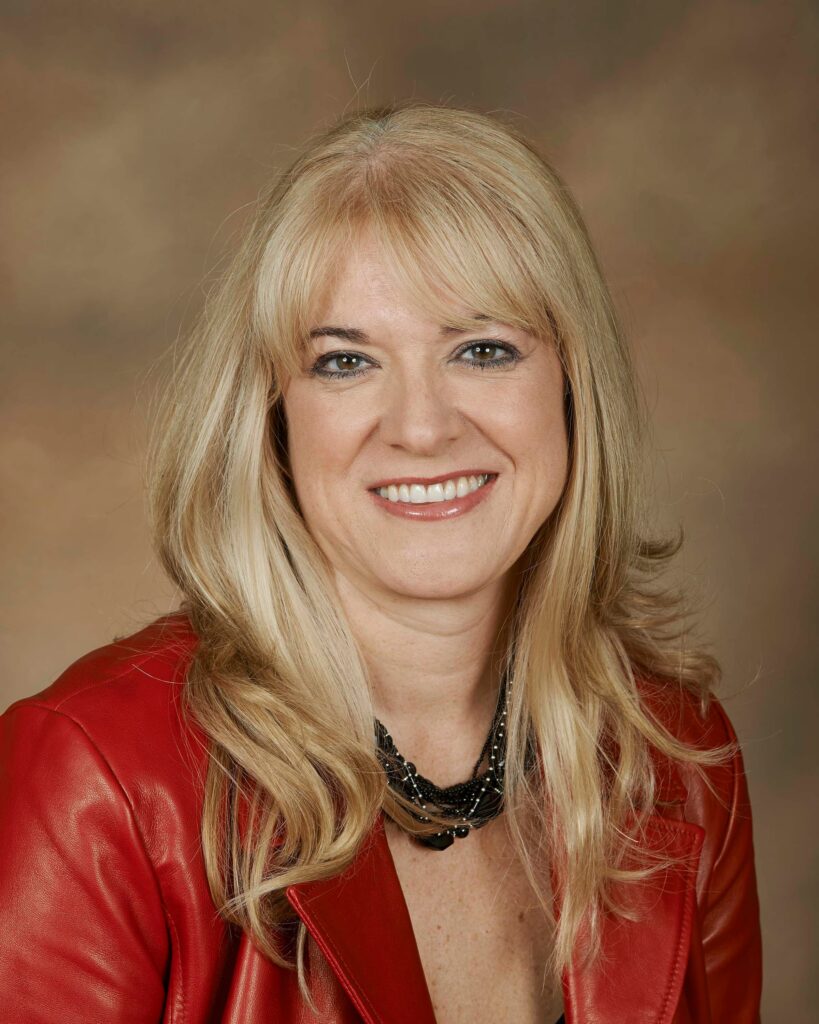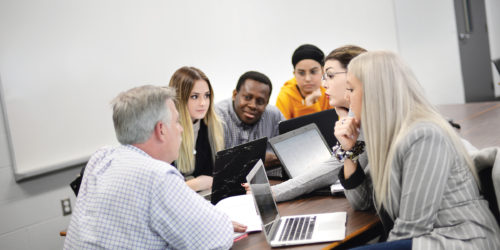Faculty Innovation 2022 – a Faculty Member’s Story 1
The theme of the 2022 Faculty Innovation Award was “inspiring students to engage meaningfully in assessment.” We met with Diana Degan, the award winner from the School of Business, to ask her about the way she reworked her course delivery for the Public Relations course within the Strategic Marketing Communications program to better prepare her students for their major assignment. This is what she told us.
The Opportunity
What was the problem or the opportunity that got you innovating in the first place?
I have a class of international students in my public relations class. The biggest assignment that we have in this class is worth 40%; I’m teaching them to write a client PR Plan, and they have to do it in groups.
I was seeing my students not being able to meet a number of challenges that they needed to adopt and embrace. They didn’t know about how academic integrity works in an Ontario College. They didn’t necessarily know about working in groups in a Canadian academic setting. They didn’t know about doing application-oriented assignments. They didn’t know how to juggle multiple assignments across all their classes at the same time. So, I saw an opportunity to rework the major assignment to address all these issues with the one major assignment, because it is such a major focus for the semester.
The Goal
So your goal, then, was to rework this major assignment?
Yes. My goal was to develop a method of teaching that would take the writing of the Client PR Plan and help them to figure it all out with one major assignment. We start working on it in Week 4, but I actually start talking about all the components in Week 1 and integrate it all the way through the semester. So how do I teach them to handle assignments, to work in groups, to understand academic integrity, to juggle competitive and competing priorities, including – for some of the students – learning long distance in different time zones? And my ultimate goal is to have everybody pass this assignment, and to pass the course.
Action
What are the actions that you took to achieve the goal?
Academic Integrity
I started talking in the first class about what academic integrity is. Academic integrity is a component of every single one of my classes because it’s part of public relations; it is actually one of our ethical standards – to cite your sources for the work you’re doing. So I actually made that connection between what we do in the industry and what academic integrity means. I taught them about it, and I developed infographics, which I used to walk them through in the beginning and all the way through the course.
Next, I worked with the library to develop a “cheat sheet” – an outline showing how to do citation and references for all different kinds of sources – TV news, for example. So, I worked with the library to create a sample for any kind of source that students were going to need.
I have an entire section in eConestoga about academic integrity and plagiarism including the infographics I have created. I created some humorous ones, and I get it across that way. In the first two weeks students are so shocked and scared about academic integrity. I say to them, “come to me and ask questions,” and it is the one thing that keeps coming up every week. I encourage them to use the cheat sheet for every class they have – it will help in all their classes.
Group Work
Next, group work was something many of my students had never done. Most of them have never done a report before, and they didn’t know how to deal with issues that come up in groups. So, I said, “okay, we’re going to talk about what it means to be in a group, how to work together in a group, and what it means to be successful in a group.”
I asked, “What kinds of things do you think are good about being in a group, and what could you see as being pitfalls?” And so that became part of the group activity that they do leading into their team contract, coming up with group guidelines for the team contract and doing a workback schedule.
I asked them, “What does group diversity mean? You know people are different. You’re not all going to think the same. You’re all going to have different priorities.” This was even more true when they were all in different countries and different time zones. And I said, “Some of you are going to be in groups with your friends, and you won’t be friends at the end.” So, we talk about all of that.
And then I created an infographic and a template for what to do if students have problems. It uses the code of stinky fish, which I learned in one of the courses I took. I explained to them, “You know that if you leave a fish on the counter for a couple of days, it’s going to get really stinky, really fast.” The students all laughed. Then I said, “Well imagine if you leave an issue in your group and you don’t talk about it. It’s going to become a sticky, stinky fish, really, really fast. So, use this as a code word. If someone’s not showing up to meetings, say, guys, we’ve got a stinky fish in the group. We’ve got to talk about it, because it’s going to become a stinky fish if we don’t deal with it.” And so, a couple of them have come to me, and told me, “we have a stinky fish in our group we need to talk about, can we?” I will always say to them, “have you walked through the template?”
I’ve created a module for group work in eConestoga. And then I have a separate module for the client PR Plan. Each module has different materials for them to work with. The group work module houses how-to resources and templates that that they can go back to. I will redirect them there first. I say, “I will always help you. But have you done this first?”
PR “Agencies” in Teams
I’ve also set up the groups as PR agencies using Microsoft Teams. Each group comes up with an agency name, and the general Team area is named the Global Head Agency. I’m the head of the Agency, and the groups all have private rooms, and then it’s like I’m walking down the hallway, and I’m poking my head into the boardroom, saying, “what’s going on in here? How are you guys today?” It’s a fight to get them off WhatsApp and to introduce them to the way that industry works. I point out, “if you’re in here, then I can assist you. I can give you input before you hand in your materials.” I can also tell if they are leaving things to the last minute. I’ll go in to the Teams channel and leave little encouraging notes as well. They also upload their contracts into their Teams channels and I can follow how they planned.
I allow students time in class to work in their groups, and I meet with the groups in class. I also give them real life client examples in class to work through and examples from previous students. A big resource they are given is a template for doing the plan.
Multiple Drafts
The last thing I implemented is three drafts to the assignment itself. A PR Plan is written in five sections. Draft one covers sections 1 and 2. Sections, 3 4, and 5 are in draft two. And then I give them the feedback for each of the drafts. I will meet with the groups and go through the feedback with them. Then they are able to take both of those drafts and that detailed feedback and put it together into one final plan. So, they can fail certain sections but do really well on the final version.
Impact
You made these innovations. You’ve tried it out with your students. What was the impact?
Everything is aligned with my course outcomes. Five out of the six outcomes are hit with this assignment. 85% of the groups have done well or had no issues. Groups may struggle on the first draft, but there’s a marked improvement by the final draft. All of the agency groups passed the assignment scoring between 70 and 100%. And in the last semester, only one student failed the course, but it is hard to a pass a student when no assignments have been handed in!
And one of the biggest signs of success for me is the emails I get from students saying how much they have enjoyed the class and how much they have learned about PR, a subject they knew very little about before and now would consider for a career.
Submitting for the Award
So what moved you to actually make a submission to Faculty Innovation Award competition?
I think in some ways it’s to share what I’m doing in my class with others, to validate what I’m doing, and to continue to show what we are doing in the Strategic Marketing Communications program. I truly believe in the program. I think it’s one of the best programs out there. And I think in some ways I was motivated by being able to take so many courses and workshops over the last three years. It is to be able to show what I’ve done with it. It’s a little bit of me giving Teaching and Learning back a love letter about everything you have taught me.
Sharing with Colleagues
Interested in some of the tools Diana created for her students? She has shared her APA sheet and her templates for addressing issues and conflict resolution in groups.
Group Work – An Infographic for Addressing Issues and Conflict Resolution
Group Work – A Template for Addressing Issues and Conflict Resolution
Faculty Innovation Award for 2023
Would you like to make a submission for the next Faculty Innovation Award? Check out it out here.




